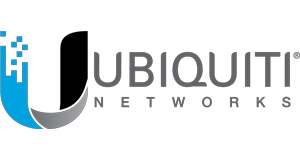As artificial intelligence, commonly known as AI, becomes more accessible and powerful, more and more small to medium businesses are exploring how to integrate AI into their operations. Whether it’s automating customer service, enhancing analytics, or streamlining workflows, AI could unlock great efficiencies and growth. But with great power comes great responsibility, especially when it comes to data security.
The Australian Cyber Security Centre (ACSC) recently released guidance on AI Data Security, and it contains some important lessons for those that are ready to embark on their journey. Here’s what you need to know.
Why AI Data Security Matters
AI systems are only as good as the data they’re trained on. If that data is compromised, outdated, manipulated or even false, the AI’s decisions can become unreliable. For businesses, this could mean anything from poor customer experiences to serious compliance breaches.
Secure the Entire AI Lifecycle
AI isn’t a “set & forget” tool. The ACSC emphasises that data security must be maintained throughout the entire AI lifecycle:
- Development: Ensure training data is clean, verified, and securely stored. Make sure that the external data source is reliable or that the AI only has access to valid data.
- Testing: Monitor for anomalies or unexpected behaviour. Reviewing & verifying the AI outcomes is important to ensure correct functionality.
- Deployment: Use secure infrastructure and access controls. Ensure that the AI functionality is protected by strong cyber security measures and access is controlled & regularly reviewed.
- Operation: Continuously monitor for data drift or malicious interference. Bad actors focus more and more on AI to either corrupt the data or use it for their own advantage for data collection & extraction.
Best Practices for companies embracing AI
Here are some key recommendations from the ACSC that businesses should consider when implementing AI into their operations:
- Encrypt data at rest and in transit
- Use digital signatures to verify data integrity
- Track data provenance to ensure sources are trustworthy
- Store data securely with access controls
- Deploy on trusted infrastructure, either on-premise or in the cloud, with regular patching and monitoring
Watch Out for These Risks
Data Supply Chain Attacks
Example: A business integrates a third-party AI tool that pulls customer data from an external CRM. If that CRM provider suffers a breach or provides tampered data, the AI could make flawed decisions—like approving fraudulent transactions or misclassifying customers.
Data Poisoning
Example: A retail company uses AI to forecast demand based on historical sales data. A malicious actor injects fake sales records into the dataset, causing the AI to overstock low-demand items and understock high-demand ones—leading to financial loss and customer dissatisfaction.
Data Drift
Example: A healthcare provider uses AI to triage patient inquiries. Over time, the language patients use changes (e.g., new slang or symptoms related to emerging illnesses), but the AI isn’t retrained. This leads to misclassification of urgent cases, risking patient safety.
How ONGC Can Help
As your Technology Service Provider, we can play a critical role in helping you adopt AI securely. Here’s how:
- Provide education on AI risks and responsibilities
- Assess AI readiness, including data hygiene and infrastructure
- Implement security controls in your IT environment
- Monitor and maintain AI systems post-deployment
Final Thoughts
AI can be a game-changer for organisations, but only if it’s built on a foundation of secure, trustworthy data. By following the ACSC’s guidance, you can start harnessing AI’s potential while minimising risk to the business.
Need help assessing your AI security posture? Contact us today to start the conversation.







